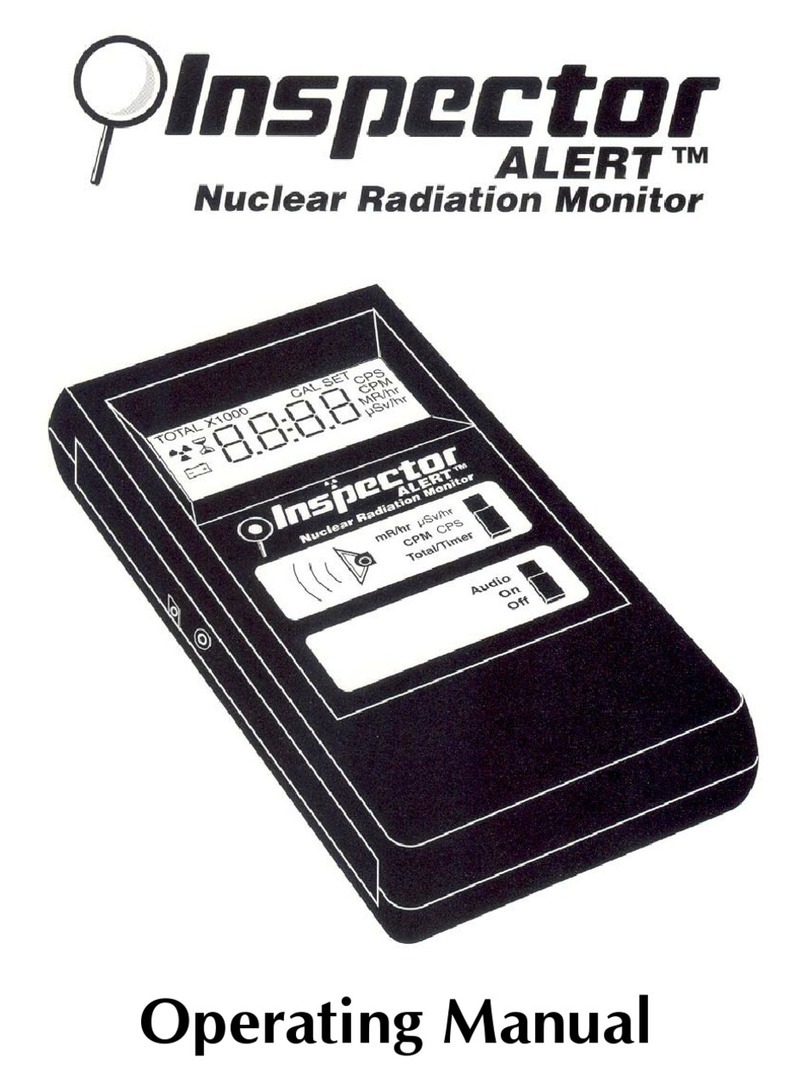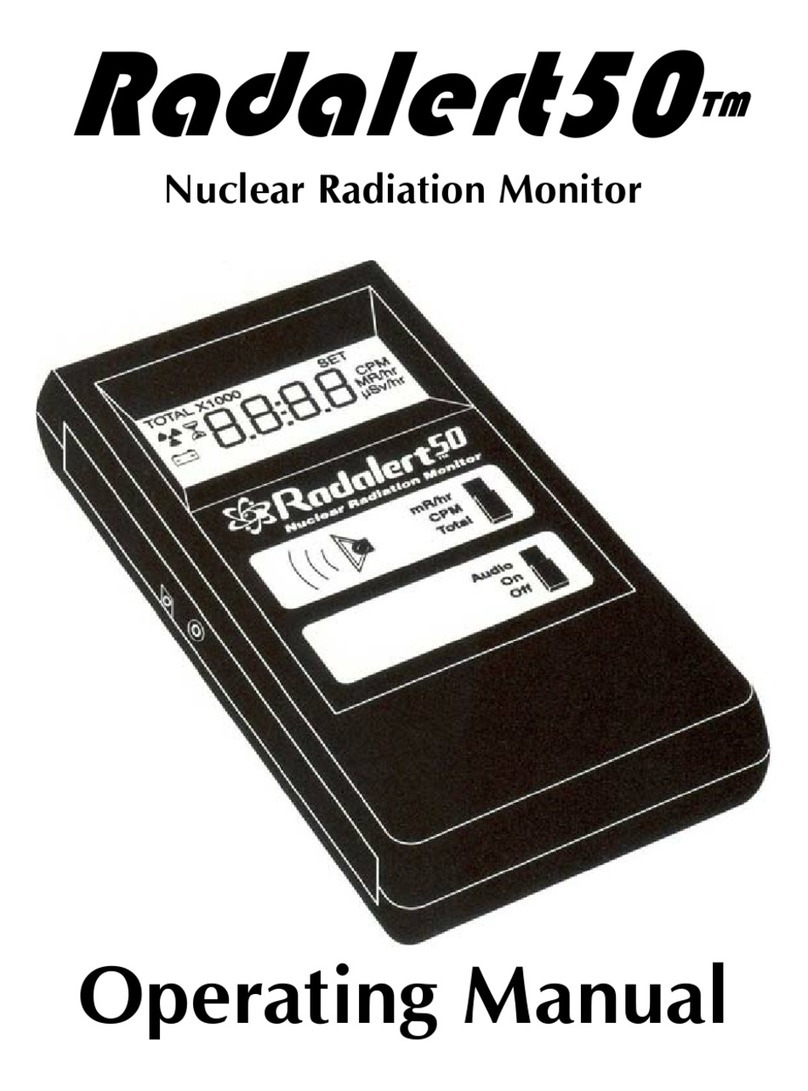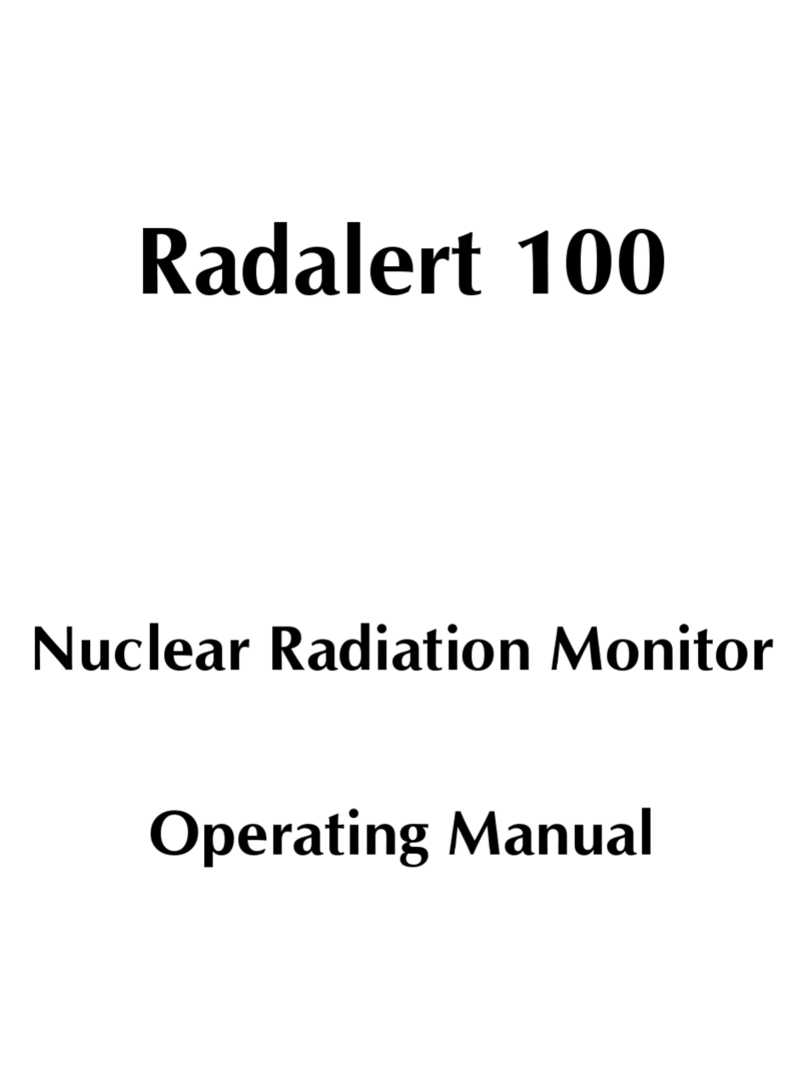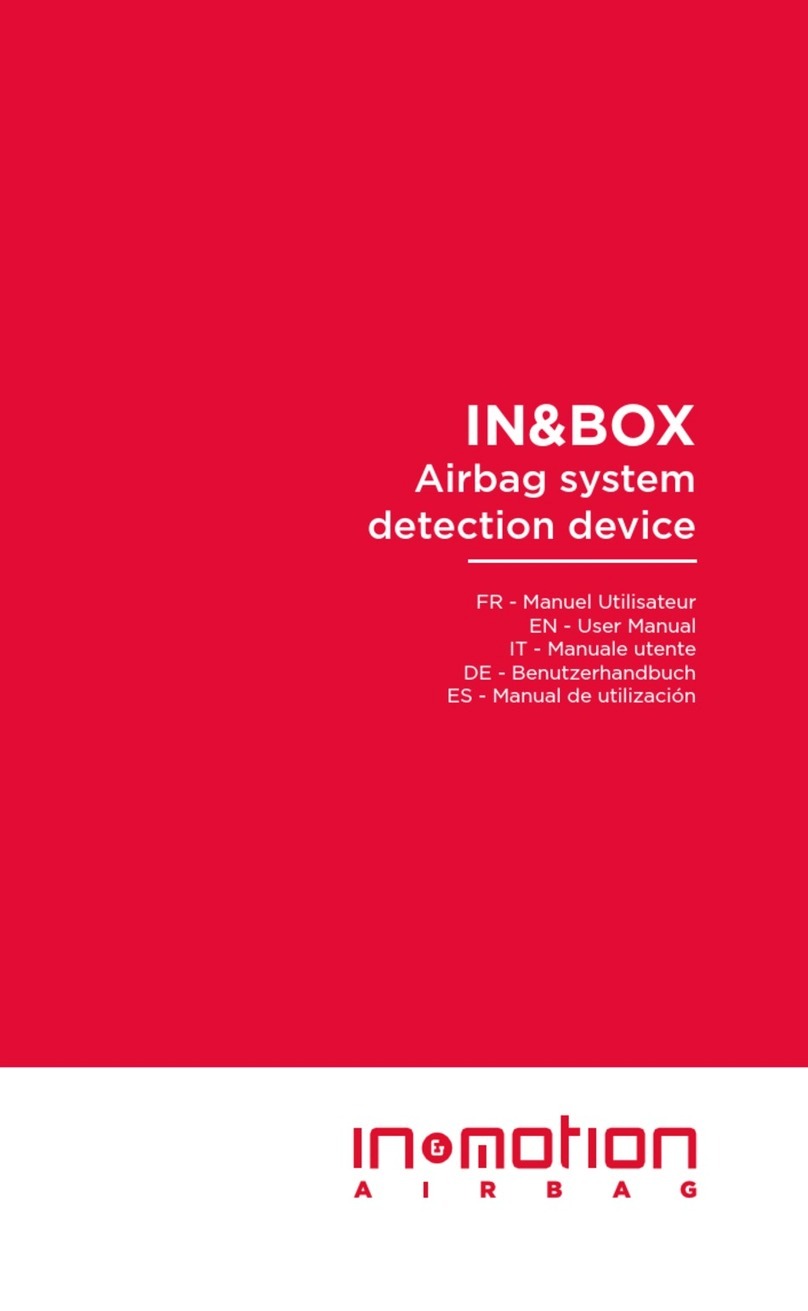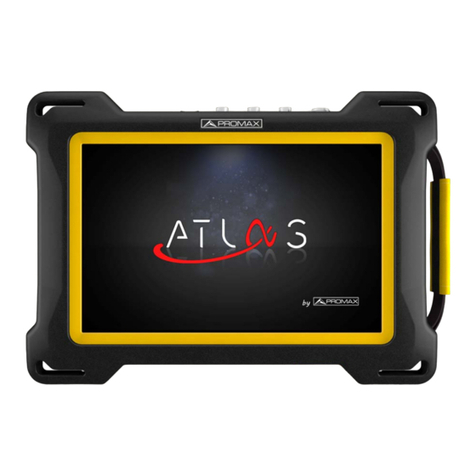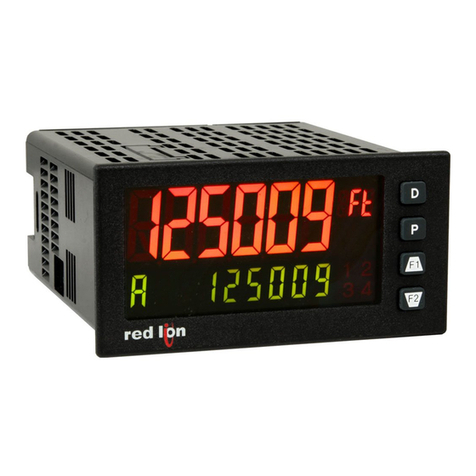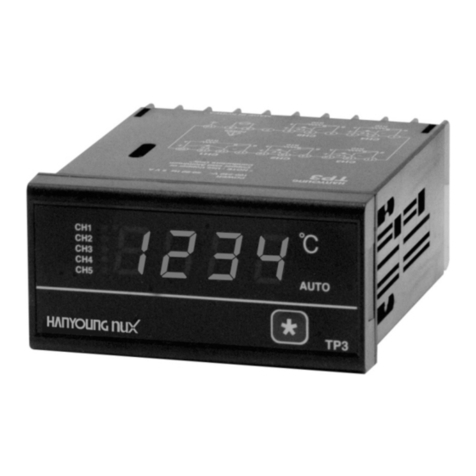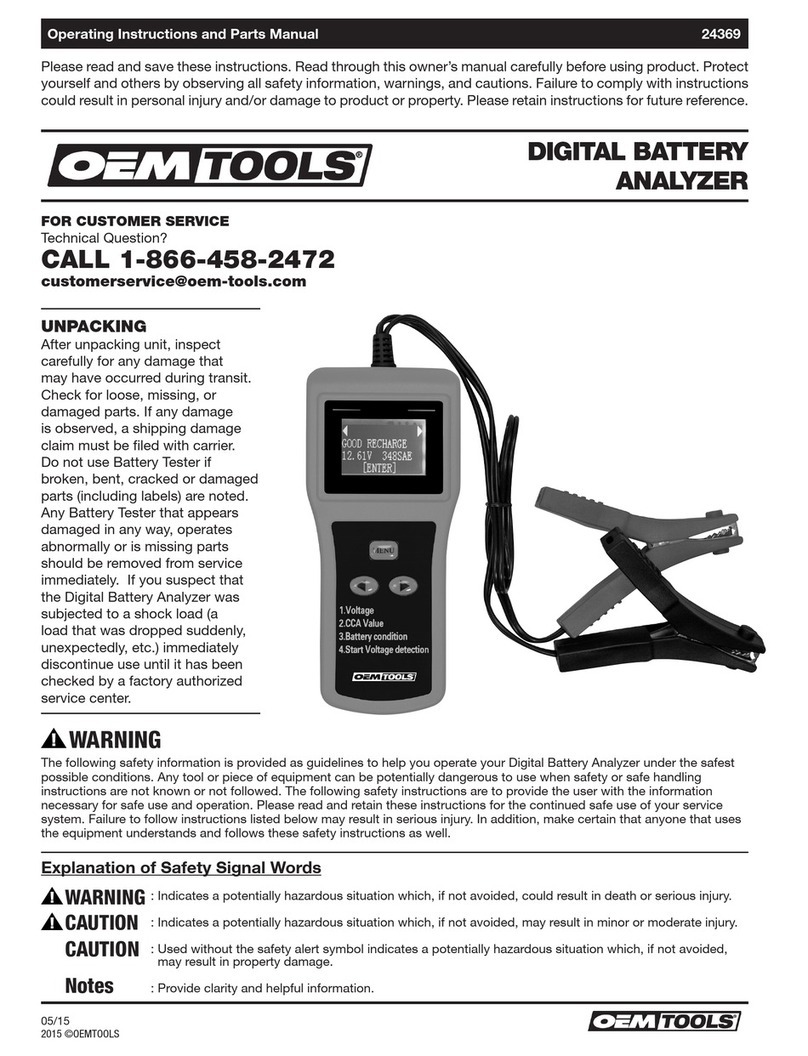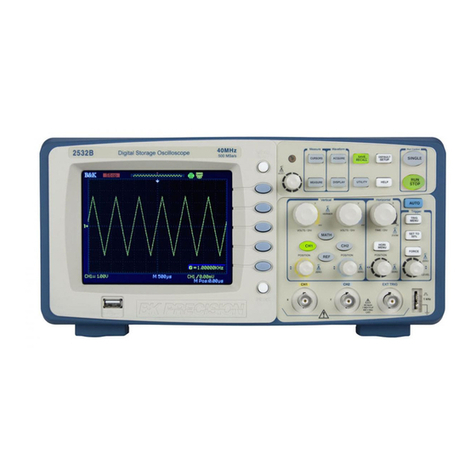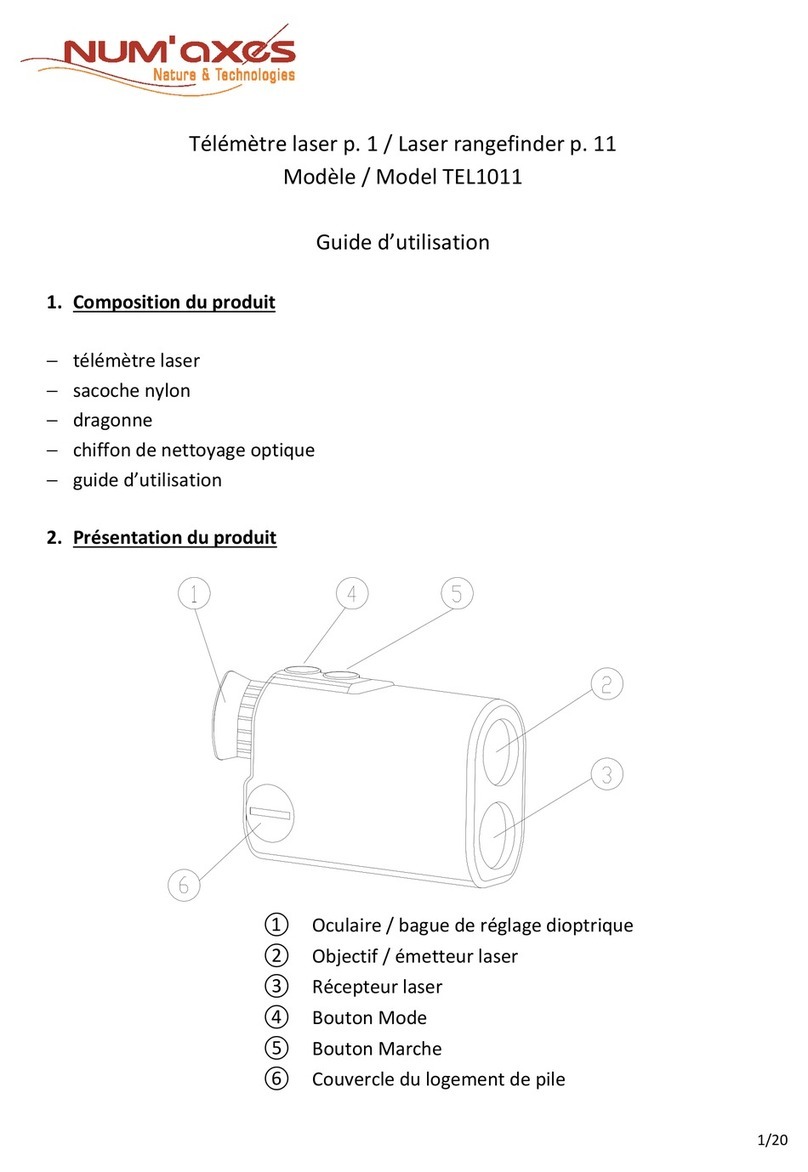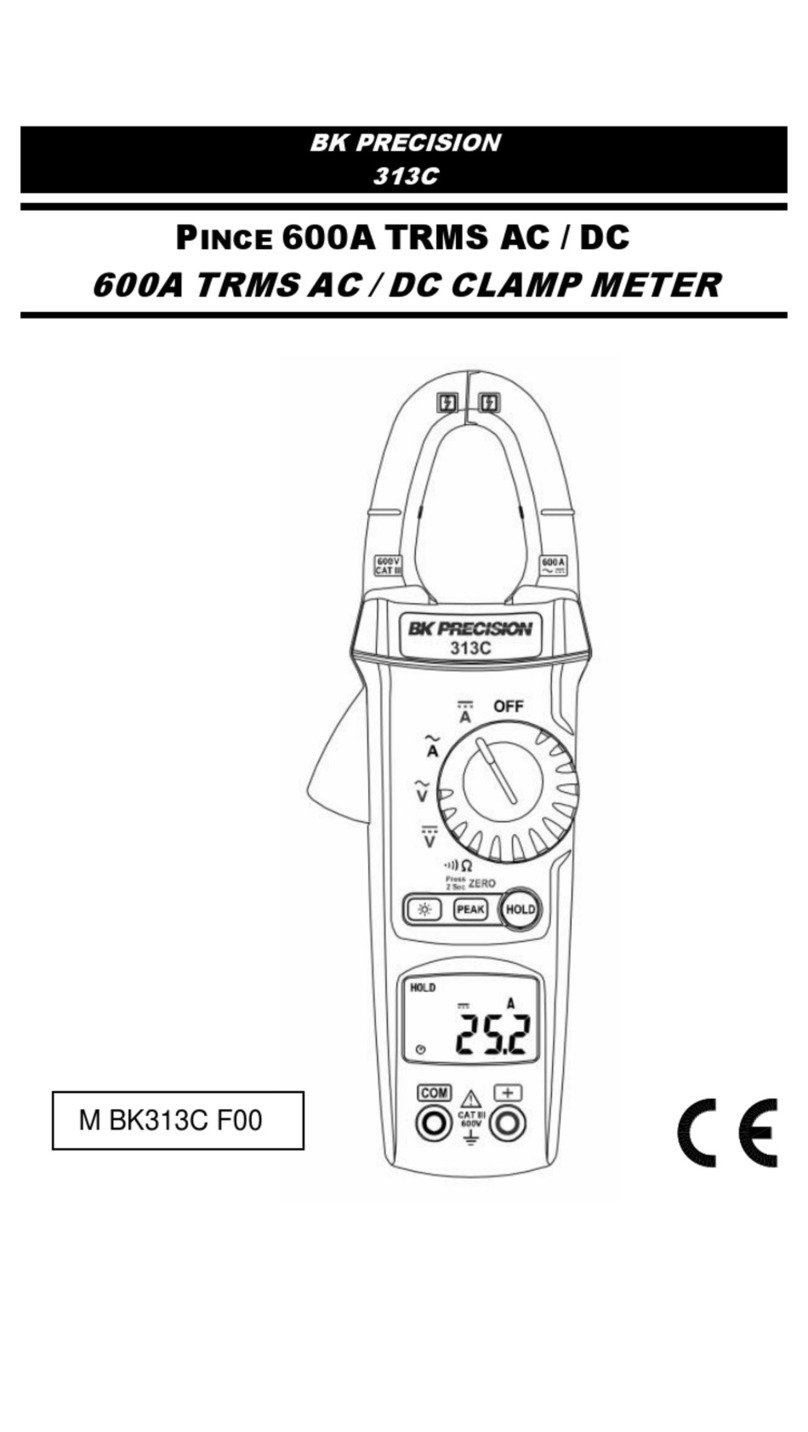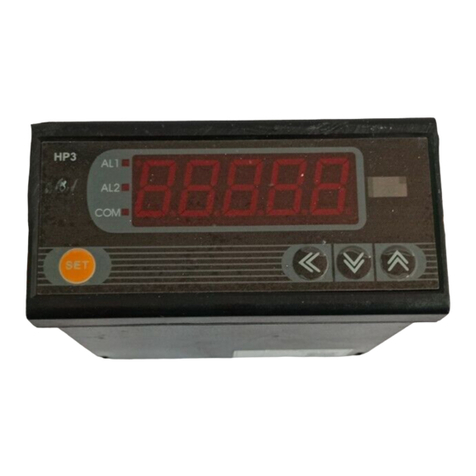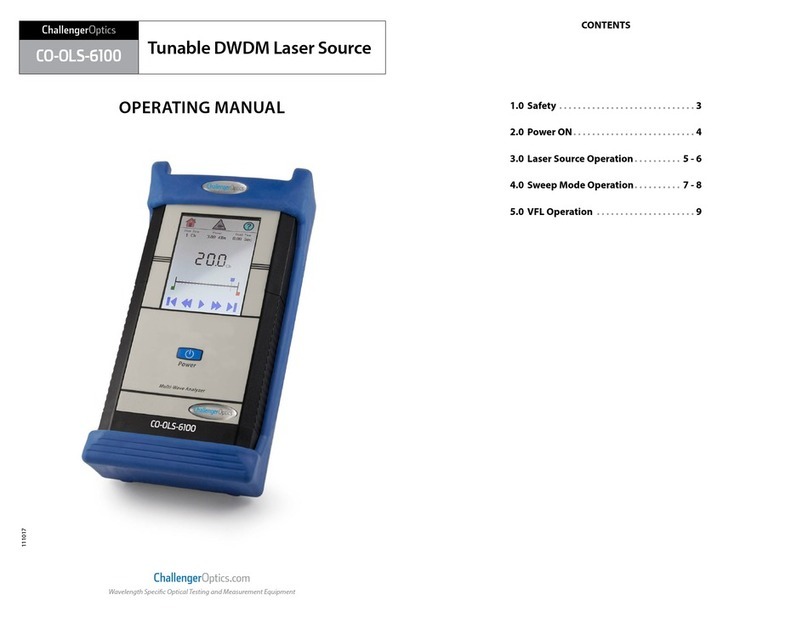International Medcom Inspector User manual

Inspector
Nuclear Radiation Monitor
Operating Manual

Inspector
Nuclear Radiation Monitor
Operating Manual
Copyright 1996 by International Medcom, Inc. All rights reserved.

Contents
1 Introduction 1
How the Inspector Detects Radiation 1
Precautions 1
2 Features 3
The Display 4
The Switches 5
The Detector 6
The Input/Output Ports 7
3 Operation 8
Units of Measurement 8
Starting the Inspector 8
Operating in the Dose Rate Modes 8
Operating in Total/Timer Mode 9
Operating Ranges and Response Times 11
The Utility Menu 12
Interfacing to an External Device 13
Using an External Probe 14
4 Common Procedures 15
Establishing the Background Count 15
Environmental Area Monitoring 16
Checking for Surface Contamination 16
5 Maintenance 17
Calibration 17
Troubleshooting 19
Service 21
Appendix A Technical Specifications 21
Appendix B Sensitivity to Common Isotopes 22
Appendix C Basics of Radiation and Its Measurement 23
Warranty 26

1 Introduction
The Inspector is a health and safety instrument that is optimized to detect low
levels of radiation. It measures alpha, beta, and gamma radiation. Its
applications include:
•Detecting and measuring surface contamination
•Monitoring possible radiation exposure while working with radionuclides
•Screening for environmental contamination
•Detecting noble gases and low energy radionuclides
How the Inspector Detects Radiation
The Inspector uses a Geiger-Mueller tube to detect radiation. The Geiger tube
generates a pulse of electrical current each time radiation passes through the
tube and causes ionization. Each pulse is electronically detected and registers
as a count. The Inspector displays the counts in the mode you choose:
counts per minute (CPM), milliroentgens per hour (mR/hr), or total counts. In
SI units, counts per second (CPS) and microsieverts per hour (µSv/hr) are
used.
The number of counts detected by the Inspector varies from minute to minute
due to the random nature of radioactivity. A reading is expressed more
accurately as an average over time, and the average is more accurate over a
longer time period.
Precautions
To keep the Inspector in good condition, handle it with care, and observe the
following precautions:
•Do not contaminate the Inspector by touching it to radioactive surfaces or
materials. If contamination is suspected, you can replace the rubber strips
above and below the rear label with the extra strips supplied with the
Inspector.
•Do not leave the Inspector in temperatures over 100°F (38°C) or in direct
sunlight for extended periods of time.
•Do not get the Inspector wet. Water can damage the circuitry and the
coating of the mica surface of the Geiger tube.
1

•Avoid making measurements with the detector window in direct sunlight;
this could affect the readings if the coating of the mica surface of the
Geiger tube has been damaged by moisture or abrasion.
•Do not put the Inspector in a microwave oven. It cannot measure
microwaves, and you may damage it or the oven.
•Avoid using the Inspector in high-intensity radio frequency, microwave,
electrostatic, and electromagnetic fields; it may be sensitive to these fields
and may not operate properly.
•If you expect to not use the Inspector for longer than one month, remove
the battery to avoid damage from battery corrosion.
•Change the battery promptly when the battery indicator appears on the
display.
2

2 Features
The Inspector measures alpha, beta, gamma, and x-ray radiation. It is
optimized to detect small changes in radiation levels and to have high
sensitivity to many common radionuclides. For more information, see
Appendix A, "Sensitivity to Common Radionuclides."
This chapter briefly describes the Inspector's functions. For more information
on how to use the Inspector, see Chapter 3, "Operation."
The Inspector counts ionizing events and displays the results on the liquid
crystal display (LCD) (4). You control which unit of measurement is shown by
using the mode switch.
Whenever the Inspector is operating, the red count light (1) flashes each time
a count (an ionizing event) is detected.
3

The Display
Several indicators on the LCD show information about the mode setting, the
current function, and the battery condition.
•The numeric display (A) shows the current radiation level in the unit
specified by the mode switch setting.
•A small battery (B) appears to the left of the numeric display to indicate
low battery voltage.
•An hourglass (C) appears to the left of the numeric display during a timed
count or in the Cal mode.
•TOTAL (D) appears when the Inspector is in Total/Timer mode.
•X1000 (E) appears when the radiation level is displayed in X1000 mode.
•CAL (F) appears while you are calibrating the Inspector.
•SET (G) appears when you are setting the timer (the numeric display
shows the timed period instead of the current radiation level) and in the Cal
mode (the numeric display shows the Cal factor instead of the current
radiation level).
•The current unit of measurement (H) CPM, CPS, mR/hr or µSv/hr is
displayed to the right of the numeric display.
4

The Switches
The Inspector has two switches on the front, and one switch and three buttons
on the end panel. Each switch has three settings, which are described below.
On/Off/Audio Switch (7)
Audio. The Inspector is on, and it makes a clicking sound for each
radiation event detected.
On. The Inspector is operating, but audio is off.
Off. The Inspector is not operating.
Mode Switch (6)
mR/hr µSv/hr. The numeric display shows the current radiation level in
milliroentgens per hour from .001 to 100. When SI units are used, it shows
the current radiation level in microseiverts per hour, from .01 to 1000.
CPM CPS. The display shows the current radiation level in counts per
minute from 0 to 300,000. When X1000 is shown, multiply the numeric
reading by 1000 to get the complete reading. When SI units are used, the
display shows the current radiation level in counts per second from 0 to
5000.
Total/Timer. The display shows the accumulated total of counts starting
when the switch is turned to this position, from 0 to 9,999,000. When
X1000 is shown, multiply the numeric reading by 1000 to get the complete
reading.
Timer Switch (10)
Off. The timer is not operating.
Set. You can now set the length of the timed period using the + and -
buttons. If the timer is already operating, the display shows the time
remaining in the timed period.
On. The timer is operating, and the display shows the total counts so far in
the timed period.
5

CAL Button (9)
The CAL button is used to calibrate the Inspector. See "Calibration" in
Chapter 5 for more information.
The CAL button is also used to make selections from the Utility Menu. See
“The Utility Menu” in Chapter 3 for more information.
+ and - Buttons (8)
The + and - buttons are used to adjust the numeric display for timed
counts and during calibration. For more information, see "Taking a Timed
Count" in Chapter 3 and "Calibration" in Chapter 5.
The + and - buttons are also used to make selections from the Utility
Menu. See “The Utility Menu” in Chapter 3 for more information.
The Detector
CAUTION: The mica surface of the Geiger tube is fragile. Be careful not to let
anything penetrate the screen.
The Inspector uses a two-inch round Geiger tube, commonly called a "pancake
tube." The screen on the back of the Inspector is called the window. It allows
alpha and low-energy beta and gamma radiation, which cannot get through the
plastic case and the stainless steel detector body, to penetrate the mica
surface of the tube. The small radiation symbol (5) on the front label indicates
the center of the Geiger tube.
6

The Input/Output Ports
There are two ports on the left side of the Inspector. Certain models have a
third port on the end panel.
The calibration input port (2) on the side of the Inspector is used for
calibrating electronically using a pulse generator. For more information, see
“Calibrating Electronically” in Chapter 5.
The output port (3) below the calibration input port allows you to interface the
Inspector to a computer, data logger, or other device. For more information,
see “Interfacing to an External Device” in Chapter 3.
The optional probe port on the end panel (present on some Inspector models)
allows you to use the Inspector with an external probe. See “Using an External
Probe” in Chapter 3.
7

3 Operation
The guidelines in this chapter describe how to use the Inspector.
Units of Measurement
The Inspector is designed both for users of conventional units (milliroentgens
per hour and counts per minute) and for users of SI units (microsieverts per
hour and counts per second). To switch between conventional and SI units,
use the Utility Menu. See “The Utility Menu” in this chapter.
Starting the Inspector
Be sure that a standard 9-volt alkaline battery is installed in the battery
compartment in the lower rear of the Inspector. Note: When installing the
battery, place the battery wires along the side of the battery and not under it.
Before you start the Inspector, make sure the timer switch on the end panel is
set to Off.
To start the Inspector, set the top switch to the mode you want, and set the
bottom switch to On or Audio. The Inspector then does a six-second system
check, displaying all the indicators and numbers.
After the system check, the radiation level is displayed in the selected mode.
Thirty seconds after you start the Inspector, a short beep indicates that enough
information has been collected to ensure statistical validity.
When using the Inspector, always be sure there is no obstruction between the
detector window and the source you are surveying or monitoring.
Operating in Dose Rate Modes
When the mode switch is set to mR/hr µSv/hr or CPM CPS, the numeric
display is updated every three seconds. At low count rates, significant
changes in the radiation level displayed can take up to 30 seconds to stabilize.
See “Operating Ranges and Response Times” in this chapter for more
information.
8

CPM (or CPS) and total counts are the most direct methods of measurement;
mR/hr (or µSv/hr) is calculated using a conversion factor optimized for Cesium-
137, so this mode is less accurate for other radionuclides, unless you have
calibrated the Inspector for a specific radionuclide using an appropriate source.
The most immediate indicators of the radiation level are the count light and the
audio beep. It takes three seconds before an increase is shown on the
numeric display in the dose rate modes.
Operating in Total/Timer Mode
When the mode switch is set to Total/Timer, the Inspector starts totaling the
counts it registers, and the numeric display is updated twice a second.
Taking a Timed Count
When a timed count is taken over a longer period, the average count per
minute is more accurate, and any small increase is more significant. For
example, if one 10-minute average is one count higher than another 10-minute
average, the increase may be due to normal variation. But over 12 hours, a
one-count increase over the 12-hour background average may be statistically
significant.
The Inspector can give you a total count for a timed period of from one minute
to 24 hours. Follow these steps:
1. With the Inspector operating, set the Mode switch to Total/Timer. The
display shows TOTAL.
2. Set the Timer switch on the end panel to Set. The display shows SET, the
hourglass, and the most recent timing period used. The first time you use
the timer, the setting is 00:01, which means one minute.
3. Use the + and – buttons to set the timing period. The timed period can be
for 1 to 10 minutes in one-minute increments, for 10 to 50 minutes in ten-
minute increments, or for 1 to 24 hours in one-hour increments.
9

4. Set the Timer switch to On. The Inspector beeps three times and starts
counting. The hourglass indicator flashes during the timed period.
If you want to see how many minutes remain, set the Timer switch to Set.
The display counts down from the time setting in hours and minutes to
zero. For example, if the display says 00:21, 21 minutes remain. Be sure
to set the switch back to On to see the total count when the timed period is
finished.
5. At the end of the timed period, the Inspector beeps three times, and
repeats the beeping several times. The number displayed is the total
count.
6. To find the average counts per minute for the timed period, divide the total
by the number of minutes.
7. Set the Timer switch to Off to return to normal operation.
As long as the Timer switch is set to On, the timer mode is active in the
background even when the Mode switch is set to one of the dose rate modes.
For example, during and after the timed period, you can switch back and forth
between Total/Timer and mR/hr; when the timed period is over, the total is
displayed whenever you switch back to Total/Timer. The hourglass indicator
is shown on the display in any mode setting; it is blinking while the timer is
totaling counts.
Taking a Total Count
The timer can take timed counts of up to twenty-four hours. In certain
situations, you may want to take a total count without the timer; for example,
taking a count for longer than twenty-four hours. Follow these steps:
1. Place the Inspector in the location where you plan to take the count.
2. Note the time.
3. Immediately when you note the time, set the mode switch to Total/Timer.
10

4. At the end of the time period, note the time and the number of counts on
the numeric display.
5. Subtract the starting time from the ending time to determine the exact
number of minutes in the timing period.
6. To get the average count, divide the total counts by the number of minutes
in the timing period.
Operating Ranges and Response Times
The following table shows the radiation levels the Inspector measures in each
mode and how they are displayed. In certain modes, when radiation levels
increase over certain preset levels, the Inspector uses autoranging,
automatically changing to the X1000 scale. Whenever X1000 is shown above
the numeric display, multiply the displayed reading by 1000 to determine the
radiation level.
Mode Regular Range X1000 Range
mR/hr .001-100 NA
µSv/hr .01-1000 NA
CPM 0-2999
3000-300,000
(displayed as 3.000-300,
with X1000 indicator)
CPS 0-5000 NA
Total/Timer 0-9999
10,000-9,999,000
(displayed as 10.00-9999,
with X1000 indicator)
Maximum level. When the maximum level for the current mode is reached,
the Inspector beeps for three seconds, pauses for three seconds, and repeats
that pattern. The numeric display flashes. The beeping pattern and the
flashing continue until the level decreases or the Inspector is turned off.
11

Display update and response time. In Total/Timer mode, the numeric display
is updated twice a second. In the dose rate modes, the numeric display is
updated every three seconds. When the radiation level is less than 6,000
CPM, the reading in any of the dose rate modes is based on the radiation
detected in the immediately previous 30 seconds. In order to give a quicker
response to changes, when the radiation level exceeds 6,000 CPM in any 30-
second period, the reading is based on the previous 6 seconds, and when it
exceeds 12,000 CPM, the reading is based on the previous 3 seconds, as
shown in the following table. This automatic change in response time is called
auto averaging.
Radiation level Basis for reading
(after first 30 seconds)
<6000 CPM or <1.75 mR/hr 30 seconds
(<100 CPS)
6000-12000 CPM or 1.75-3.6 mR/hr 6 seconds
(100-200-CPS)
>12000 CPM or >3.6 mR/hr 3 seconds
(>200 CPS)
Note: You can set the response time to 3 seconds at all radiation levels using
the Utility Menu; see “The Utility Menu” in this chapter.
The Utility Menu
The Utility Menu allows you to change the default settings for several operating
parameters. When you change a setting, it remains in effect after you turn off
the Inspector and until you change it again.
12

To activate the Utility Menu, hold down the + button while you turn on the
Inspector. The numeric display shows a single digit indicating one of the
options. To scroll through the menu, push the plus (+) and minus (–) buttons
on the end panel. To select an option, push the CAL button on the end panel.
Once an option is selected, use the + and – buttons to toggle between settings.
After you choose the setting you want, push the CAL button to save the new
setting and resume operation.
The options are:
1 Auto Averaging. on selects Auto averaging; oFF selects 3-second (fast
response) averaging at all radiation levels.
2 mR/SI. CPM mR/hr selects counts per minute and milliroentgens per
hour; CPS µSv/hr selects counts per second and microseiverts per hour.
3 Cal 100 Reset. Selecting this option automatically resets the calibration
factor to 100.
4, 5, 6 Reserved for future options.
7 Cal Factor Adjust. Displays the current calibration factor, which you then
adjust to the new factor you want. See “Calibration” in Chapter 5.
8 Factory Default Reset. Selecting this option automatically resets the
items 1, 2, and 3 to Auto averaging, CPM and mR/hr, and 100.
9 Revision #. Shows the version number of the programmed
microprocessor.
Interfacing to an External Device
The lower output jack on the left side of the Inspector is a dual miniature jack
that provides a data output that can be used to drive a CMOS or TTL device.
You can use it to record the counts on a computer, data logger, or
accumulating counter. Use a 3.5 mm stereo plug to access this port. The
output at the tip of the plug provides a positive (5 volt) pulse each time the
Geiger tube detects a count.
13

Using an External Probe
If the model of the Inspector you have has a jack on the end panel, you can
connect an external probe that is compatible with the Inspector to the jack.
See the documentation for the probe for more information.
14

4 Common Procedures
The following sections give instructions for several commonly-used
procedures. With any procedure, the user must determine the suitability of the
instrument or procedure for that application.
Establishing the Background Count
Normal background radiation levels vary at different locations, even in different
areas of the same room. To accurately interpret the readings you get on the
Inspector, it is a good idea to establish the normal background radiation level
for each area you plan to monitor. You can do this with a timed count. Use
the following steps to get a ten-minute average.
1. With the Inspector operating, set the Mode switch to Total/Timer.
2. Set the Timer switch on the end panel to Set. The display should read
00:01, which means one minute.
3. Press the + button nine times. The display should read 00:10, for ten
minutes.
4. Set the Timer switch to On. The Inspector beeps three times and starts
counting.
If you want to see how much of the ten minutes remains, set the Timer
switch to Set. The display counts down from ten minutes to zero. For
example, if the display says 00:03, seven minutes have passed and three
minutes remain. Reset the switch to On to return to the radiation level
display.
5. At the end of the ten minutes, the Inspector beeps three times, and
repeats the beeping several times. Note the total reading.
6. To find the average counts per minute, divide the total by ten (the number
of minutes).
A ten-minute average is moderately accurate. You can repeat it several times
and see how close the averages are. To establish a more accurate average,
take a one-hour timed count. If you need to determine whether there is prior
contamination, take averages in several locations and compare the averages.
For more information on using the timer, see "Taking a Timed Count" in
Chapter 3.
15

Environmental Area Monitoring
You can keep the Inspector in CPM or mR/hr mode whenever you want to
monitor the ambient radiation, and look at it from time to time to check for
elevated readings.
If you suspect an increase in ambient radiation, use the timer and take a five or
ten minute count, and compare the average to your average background
count. If you suspect an increase that is too small to detect with a short timed
reading, you can take a longer count (for example 6, 12, or 24 hours).
Checking for Surface Contamination
To check a surface, hold the Inspector with the alpha window facing and close
to the surface. If you want to find out if a surface is slightly radioactive, place
the Inspector next to it and take a timed count or a longer accumulated count.
CAUTION: Never touch the Inspector to a surface that may be contaminated.
You may contaminate the instrument. The rubber strips on the back can be
replaced if they become contaminated. Replacement strips are supplied with
the Inspector.
16

5 Maintenance
The Inspector requires regular calibration and careful handling. Use the
following guidelines to maintain the Inspector properly.
Calibration
The Inspector should be calibrated as often as your regulations require, or in
any case, at least once a year. The best way to calibrate is using a calibrated
source. If no source is available, it is possible to calibrate electronically using
a pulse generator.
The standard radionuclide for calibration is Cesium-137. A certified calibration
source should be used. To calibrate the Inspector for another radionuclide,
you must use a calibrated source for that radionuclide or the appropriate
conversion factor referenced to Cs-137.
CAUTION: In calibration mode, the smallest increment that can be adjusted is
.010, which prevents fine adjustment of the calibration factor. Thus, errors can
occur if you use a low-level source or background to set the calibration factor.
Calibrating Using a Source
Before you calibrate the Inspector, make sure the distance between the
Inspector and the source is correct to produce the appropriate dose rate.
Then follow these steps:
1. Be sure the On/Off/Audio switch is set to On, not Audio, so that you can
hear the countdown timer sound.
2. Set the Mode switch to mR/hr µSv/hr.
3. Press the CAL button on the top of the Inspector.
The display shows CAL, and the Inspector counts down for 15 seconds,
chirping each second. This delay gives you a chance to move out of the
field and then expose the source. At the end of the 15 seconds, the
Inspector beeps.
4. The Inspector collects data for 30 seconds, chirping every 2 seconds, with
CAL and the hourglass indicator flashing. At the end of the 30 seconds, it
beeps. The display shows CAL, and SET is flashing. You can now seal or
close the source.
17
Table of contents
Other International Medcom Measuring Instrument manuals
Popular Measuring Instrument manuals by other brands

Dilog
Dilog CombiVolt DL6780 instruction manual

Kyoritsu Electrical Instruments Works, Ltd.
Kyoritsu Electrical Instruments Works, Ltd. KEW2040 instruction manual
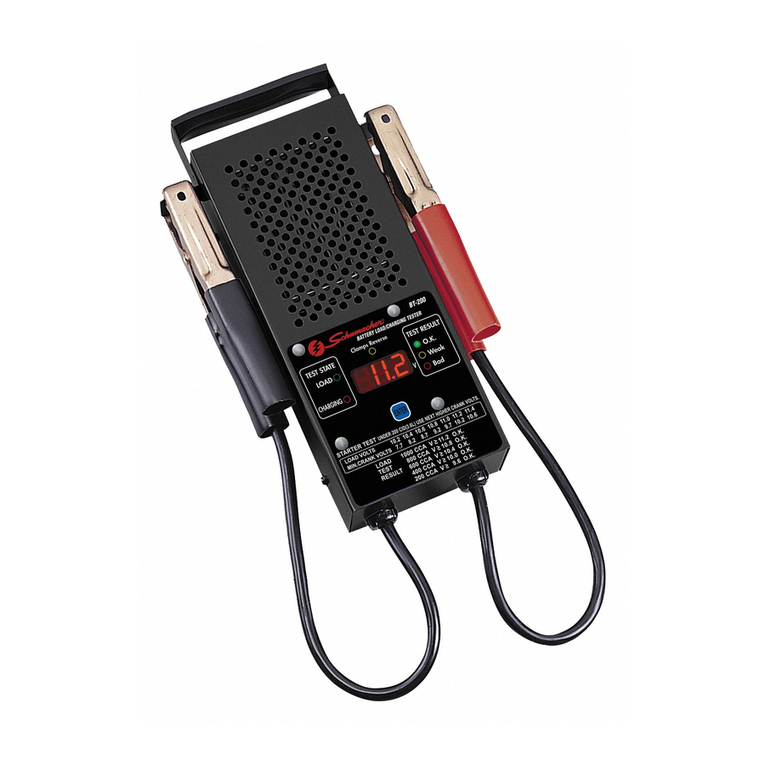
Proseries
Proseries PST-200 owner's manual
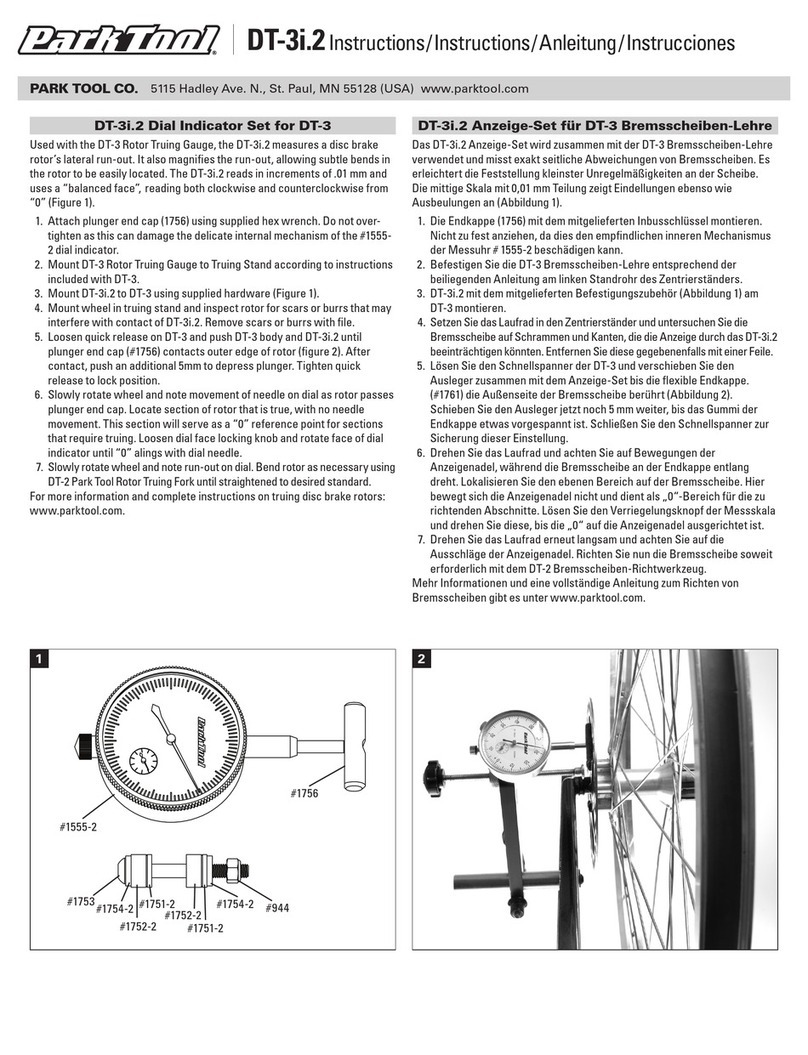
parktool
parktool DT-3i.2 instructions
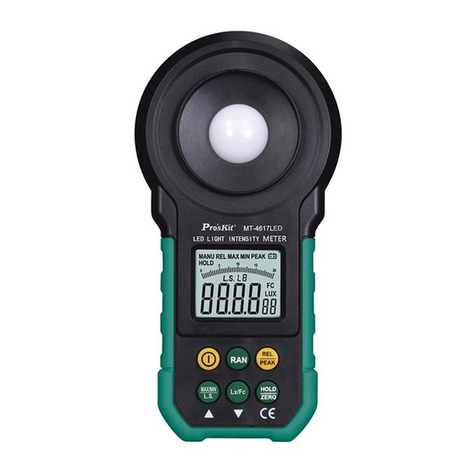
Pro's Kit
Pro's Kit MT-4617LED user manual

d & b audiotechnik
d & b audiotechnik ArraySight manual
